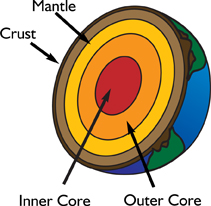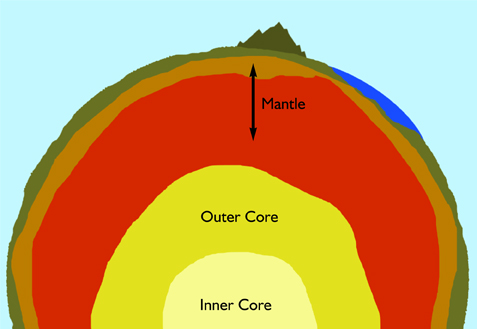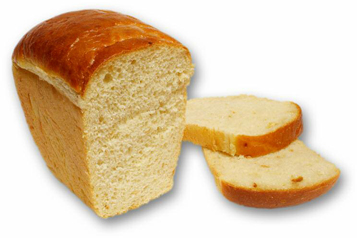THE EARTH'S LAYERS
The Inner and Outer Core, The Mantle, The Crust
The part of the Earth we live on is solid, but the inside of the Earth is very different. Earth has four different layers: the inner core, the outer core, the mantle, and the crust.
The Inner and Outer Core
When the Earth was formed, the heaviest materials sank to the center. These materials formed the Earth's core. They share the same name, but the inner and outer core are very different.

| Inner Core | Outer Core |
|---|---|
| solid | liquid |
| made of solid metals | made of liquid metals |
| temperature as high as 9,000° F (4,982° C) | temperatures range from 4,000 to 9,000° F (2,204 to 4,982° C) |
| depth: about 3,200 to 3,900 miles (5,150 to 6,276 km) | depth: about 1,800 to 3,200 miles (2,897 to 5,150 km) |
The Mantle
The thickest part of the Earth is the mantle. It begins about 25 miles (40 km) below the Earth's surface. It reaches 1,800 miles (2,897 km) deep into the Earth.
The mantle is very hot. The parts near the core reach 4,000° F (2,204° C). The parts closest to the Earth's surface reach about 1,600° F (871° C).
The mantle is solid, but the high heat causes the mantle to move slowly beneath the Earth's crust.

The Crust
We call the outside part of a loaf of bread the crust. We use the same word to describe the outer layer of the Earth. The crust is very thin. It contains less than one percent of the entire volume of the Earth.
There are two types of crust: oceanic crust and continental crust. Oceanic crust lies beneath the oceans and is about five miles (8 km) thick. Continental crust is the rock that makes up the continents. It can range from about 20 to 25 miles (32 to 40 km) thick.
The crust can reach 1,600° F (871° C) near the mantle. It is the same as the air temperature at the surface.

Additional topics
- SOIL - The Lithosphere, Soil Horizons, Soil Composition, Particle Types and Soil Textures
- WHAT IS GEOLOGY?
- Other Free Encyclopedias